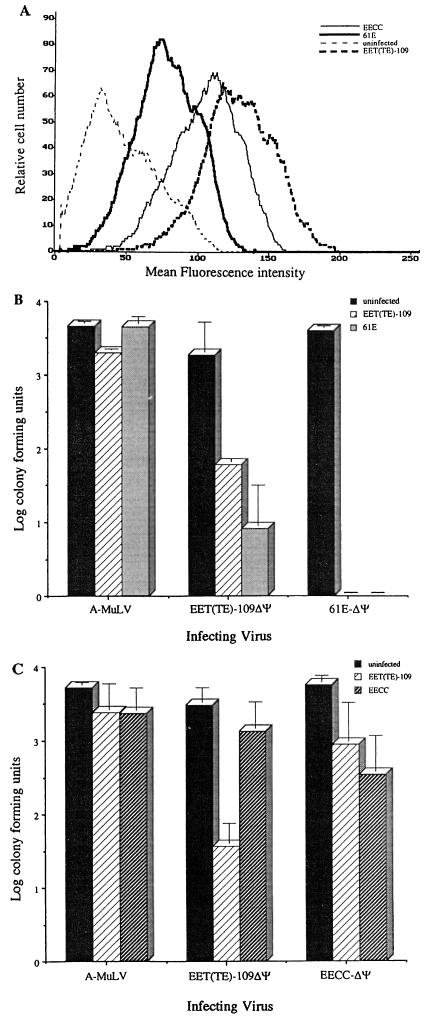FIG. 6.
Superinfection interference patterns of the 81T-109 versus 61E and 61C envelope proteins. (A) Flow cytometric analysis of chronically 61E, EECC, and EET(TE)-109 infected AH927 cells compared with uninfected AH927 cells, using C11D8, a murine monoclonal antibody against FeLV SU. The ordinate indicates relative cell number; the abscissa indicates mean fluorescence intensity. (B) Superinfection interference of pseudotyped viruses in the 61E- and EET(TE)-109-infected feline fibroblasts analyzed in panel A. (C) Superinfection interference of pseudotyped viruses in the EECC- and EET(TE)-109-infected feline fibroblasts analyzed in panel A. In panels B and C, the height of the bars indicates the log of the number of CFU scored after infection at an MOI of approximately 0.0125. Pseudotyped viruses used for challenge bear either the amphotropic MuLV (A-MuLV), 81T-109 [EET(TE)-109ΔΨ], 61E (61E-ΔΨ), or 61C (EECC-ΔΨ) envelope and are labeled under each set of three bars. The legend to the right indicates the target cell lines for these infection studies. These data are an average of three independent experiments; the error bars indicate the sample standard deviation between the experiments. Similar results were obtained from multiple infection experiments using different stocks and target cells at different passage numbers, with the exception of one experiment in which we detected a low level of 61E-ΔΨ infection in EET(TE)-109-infected AH927 cells. However, 61E infection of these cells was not detected in additional experiments using up to 100-fold more virus.

